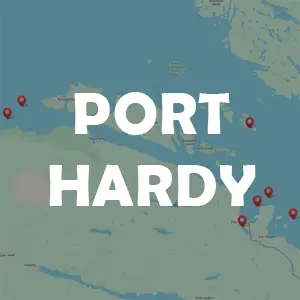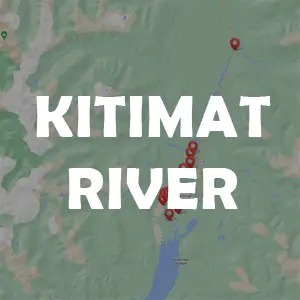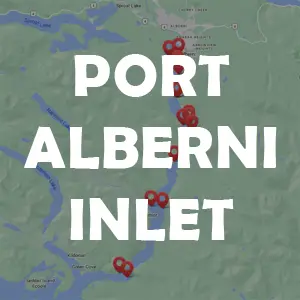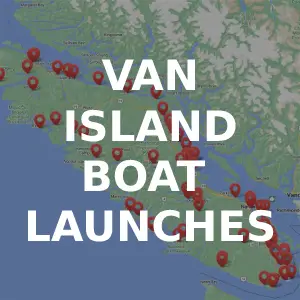Hey there fellow seafood lovers! I’ve spent years perfecting my shrimp trapping technique and today I’m gonna share everything I know about catching these tasty crustaceans. Whether you’re a beginner or experienced fisher, this guide will help you fill your cooler with fresh shrimp.
Essential Equipment You’ll Need
Before heading out, make sure you have:
- Shrimp trap (vinyl-coated with 1/2″ to 1″ mesh recommended)
- Weighted line (1/4″ or 5/16″ lead core)
- Marker buoy (6×11 size works great)
- Bait and bait container
- Weights for the trap
- Zip ties
- Basic tools (knife, pliers, lighter)
Choosing the Right Trap
I personally recommend getting a quality trap with these features:
- Multiple entrance funnels (4 is ideal)
- Built-in bait cage
- Proper mesh size (1/2″ x 1″ works best)
- Durable vinyl coating
- Collapsible design for easy storage
Best Baits for Shrimp Trapping
Here’s what I’ve found works best:
Top Performing Baits
- Cat food (especially seafood flavors)
- Menhaden
- Fish heads/carcasses
- Commercial shrimp bait pellets
Pro Tip Fresh bait always outperforms frozen I’ve had great success using local fish carcasses from the area I’m trapping
Setting Up Your Trap
- Attach weighted line to trap using a 4-point harness
- Add weights evenly across bottom (more for deeper water)
- Secure bait in cage or mesh bag
- Close all doors tightly
- Mark buoy with required identification
Where to Place Your Traps
Best locations include:
- Shallow bays
- Estuaries
- Grass flats
- Areas with muddy bottom
- Near structures like pilings or breakwaters
- Depths between 3-10 feet for most species
Timing is Everything
For best results:
- Set traps at dusk
- Leave overnight (minimum 12 hours)
- Check during incoming tide
- Fish during darker moon phases
- Peak seasons vary by region (check local regulations)
Tips for Success
- Use more weight in deeper water or strong currents
- Check traps regularly (every 2-4 hours ideal)
- Keep bait fresh and secured
- Clean traps after each use
- Store in dry, ventilated area
- Follow local regulations strictly
Common Mistakes to Avoid
- Using unweighted line (dangerous for boats)
- Setting traps in heavy traffic areas
- Poor weight distribution
- Incorrect mesh size
- Not checking local regulations
Safety First!
Remember these important points:
- Always use weighted line
- Mark buoys properly
- Check weather conditions
- Know local regulations
- Handle equipment carefully
My Personal Experience
I’ve learned that patience and location are key. When I first started, I made the mistake of changing spots too frequently. Now I know it’s better to research productive areas and give them proper time to produce results.
Cleaning and Storing Your Catch
Once you’ve caught your shrimp:
- Keep them cool
- Clean with fresh water
- Remove heads if desired
- Store on ice
- Cook within 24 hours for best taste
Shrimp trapping ain’t rocket science, but it does require proper preparation and patience. Follow these guidelines, learn from your experiences, and you’ll be enjoying fresh caught shrimp in no time!
Remember to check your local fishing regulations before heading out, as rules can vary significantly by region. Happy trapping!
Need more specific info about any of these topics? Drop a comment below and I’ll help ya out!

Diagram of a Prawn / Shrimp Trap Setup
The diagram below outlines a single prawn trap setup, here in BC you can have up to 2 traps per line. There are different styles of traps and setups, this is one approach that I use here in the Pacific Northwest. See diagram for quick view and all the components are broken down further below.
Prawn / Shrimp Trap Components
Mainline – Lead line
- Line length is dependent upon the depth your prawning/shrimping. It’s recommended that you use an additional 100′ of line than the water depth. So if you’re prawning in 300′ of water, you should have a 400′ mainline. The reason for the excess is to due to line or trap drifting with the tides and also you’ll want excess line weighted down on the bottom to ensure the trap doesn’t drift (see bottom weights components).
- Weighted line (lead core line) is important as you don’t want line floating around that other boats props can run into. Typical line diameter is 5/16″.
- I like to use thimbles on both ends of my mainlines to allow for easy connections (see photo of example knot, thimble & swivel snap connector).
Buoy
- I recommend not to cheap out on the buoy. A1 Buoys are a good size for most prawn lines (including up to 2 traps on a mainline).
- Be aware of buoy colors, some states have mandatory buoy colors for prawn/shrimp traps (e.g. Yellow buoys must be used in Washington).
Buoy Line
- A short buoy line that connect the buoy to the mainline. The short line doesn’t have to be lead line and doesn’t need to be longer than 25′. You’ll need some sort of connectors on both the buoy line and mainline to connect these (see connectors components).
- This line is optional as you could tie the mainline directly to the buoy, you’ll simply need some good connectors.
Clip Weights
- These are smaller weights clipped onto the top end of the mainline to ensure your mainline is sinking near the surface. This again is to reduce any chance of a passing boat/prop running over your line.
- The clips cinch onto the mainline and have a weight attached usually around 16oz – 32oz (1 – 2 lbs).
- I like to clip my first weight about 10-15 feet below the top of the mainline. You can clip as many weights as you’d like as you work down the mainline. Personally, I don’t think you’d need more than 2 clips near the top end of your mainline, but I guess it depend on currents of the water in the upper columns.
Bottom or Trap Weights
- Adding larger weights onto the bottom of your mainline, approximately 15′ feet from trap will help in keeping your mainline tight from top and will ensure your trap doesn’t move around.
- Depending on depth, tide/current strength you’ll want to adjust your weight. A typical weight would be 10 to 15 pounds that sits on the bottom.
- Optional: You can also put weights inside the trap itself (recommend securing and ensuring the trap is well balanced so have a weight on each side).
- Optional: Adding weights to the outside of the trap. On my trap I have 8′ of 5/16 thick gauge chains to help weight down the trap. The chain wraps around the trap evenly to ensure it’s well balanced (see ).
- Optional: You can use a small 2 lb – 9 lb anchor with a short rope that connects adds some additional weight to keep the trap from moving.
Prawn Trap
- There are different types of traps, from mesh, rubber coated wire and commercial metal traps. They typically come in round or rectangle shapes.
- Because prawns and shrimp are smaller the traps have a much tighter threading vs. what you’d find in crap trap.
- There are usually 3-4 trap doors (or openings) around the trap for prawns and shrimp to enter.
Trap Harness (bridle)
- This is the line that connects the mainline to the prawn trap.
- Often these harness lines come with the trap. If they don’t, ideally you want a few connections spread across the top of the prawn trap that then connects to single connector that then connects to the bottom of the mainline.
- I like to reinforce the harness line with a metal thimble.
- Also, be sure to get steel (or some sort of metal) clips, don’t buy the plastic connectors.
Bait Jar
- These are plastic containers that hold your bait and tie inside the prawn trap. The trap should come with some straps or housing to hold this bait jar in place.
- The jar has little slits in it so the bait scent is slowly released.
Bait
- I like to use a combination of cat food can, salmon roe and/or shrimp/prawn pellets. You don’t need all three, but have at 2 of these and if you’re leaving the traps for a longer period of time, I’d recommend using pellets.
- Prawn pellets should be soaked overnight in a prawn attractant or fish oil, this will have the prawns expand a little more ensure the scent is better released when it’s in the trap.
- The cat food says in the can, but put a number of holes in the can so it slowly releases the scent. Get a cat food that has a fish base, e.g. Tuna or Salmon.
- Don’t overfill the bait jar, should be about 2/3 full as the pellets will swell open and you don’t want a tight packed bait jar as the water should be able to flow easily to ensure scent is being distributed.
Connectors
- I like to use quick clip connectors, so when I’m pulling my gear out of the water I can easily unclip it and compartmentalize everything. That said, I like the heavy duty metal clips with a swivel on the end. The swivel can be important as it’ll avoid any line tangles/twists. I ensure the clip that connects my bottom of the mainline to the trap has a swivel.
- Thimbles are very handy in reinforcing your line ends, particularly the top and bottom of the mainline. Having a thimble makes it easier for any other metal connectors to attach to the rope.
- D-shape connectors (metal carabiner with twist locks) are great for any of the connecting points. I used 4 of them to attach the chain around my trap (see photo).
- Wire rope clip, I like to use these to reinforce my knot and thimble holding on both ends of the mainline. These are a bit overkill but are cheap and do create a little extra weight as well.
Polyform A-0 Buoy Saturn Yellow 8 x 11.5 in. KUFA Sports 5/16″ Lead Core Line from 50-feet to 600-feet (400-feet, 5/16″ Lead Core Line) KUFA Tower style prawn trap (Size:ø35″x ø21″x 16-1/2″H),Stretched Mesh size:1-3/4″ Scotty Vented Crab Diner Bait Jar, 1 Liter, Red LFS Prawn / Shrimp SuperBait, 22 Lbs – – – – –





Prawn trap #bigisland
FAQ
What is the best bait for catching shrimp?
What is the best bait to catch shrimp with? Canned cat food, old fish heads, fish carcasses, salmon, rockfish, tuna, squid, sand dabs, chicken necks, gizzards, livers, etc. Fresh is best.
What is the best way to catch shrimp?
The most common way to catch shrimp is throwing a weighted cast net over a school of shrimp and then pulling it back towards you. It is recommended that you get some practice in throwing the net before in order to have your technique down.
What is the best tide to catch shrimp?
The best time to cast net for shrimp is during the middle of an outgoing tide moving into low and maybe even an hour or so of the incoming tide.
